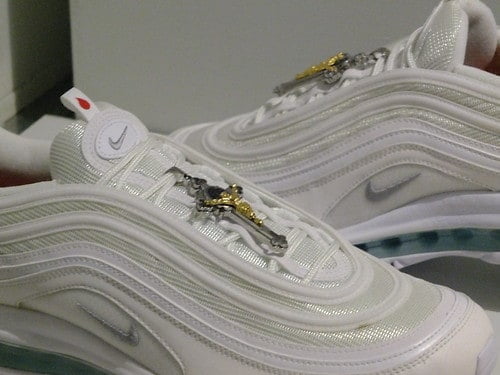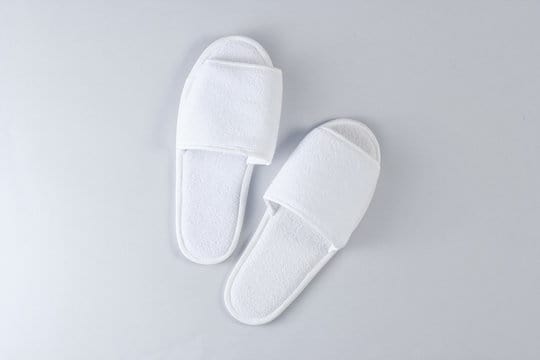Do you suffer from foot pain? Are you looking for ways to alleviate it? You may have heard about insoles providing relief, but do they really work? In this post, we’ll take a closer look at whether or not insoles can truly help reduce foot pain. Read on to find out if investing in an insole is worth it!

Introduction to Insoles
Insoles have become increasingly popular in a bid to reduce foot pain and improve mobility. They are often claimed to work by correcting biomechanical problems that can lead to foot pain, but is this really the case? Research suggests that insoles may be helpful for some people with foot pain, but there is no evidence to suggest they are effective for everyone. Insoles come in many different shapes and sizes, so it’s important to find the right one for your feet. Some people find them effective while others do not, so it’s important to experiment and see what works best for you.
Benefits of Wearing Insoles
There are a variety of reasons why people may want to wear insoles. Some people find that they experience relief from foot pain when wearing them, while others believe that their feet feel cooler and more comfortable when Insoles are worn. Additionally, many people use insoles for running or walking because they believe that they can improve the performance of these activities.
Despite this wide range of benefits, it is important to note that not everyone experiences positive results from using insoles. Some people find that they don’t notice any difference in how their feet feel while wearing them, while others report gastro-intestinal issues such as bloating or gas after starting to wear them. This suggests that there is no one right way to wear insoles and that everyone will benefit to some extent differently depending on their individual body composition and anatomy.

Types of Insoles
There are a variety of types of insoles available on the market, each with its own set of benefits. Some insoles are designed to relieve foot pain, while others are designed to improve your balance.
Some of the most popular types of insoles include arch supports, heel cushions, and orthotics. Arch supports help to support the arch of your foot, which can help to relieve foot pain. Heel cushions help to reduce pressure on the heel and Achilles tendon, which can also help to relieve foot pain. Orthotics are specially designed insoles that can help to improve your balance. They may be designed to correct alignment issues or to provide additional support for your feet.
How to Choose the Right Insole
When it comes to relieving foot pain, there are a variety of insoles to choose from. However, not all insoles are created equal. In order to choose the right one for your needs, it is important to understand the different types of insoles and their benefits.
Types of Insoles
There are three main types of insoles: shock-absorbing, compression, and stability.
Shock-absorbing insoles are designed to reduce the impact of walking on your feet. They work by absorbing the shock of each step, which reduces the amount of pain you feel in your feet.
Compression insoles help to reduce inflammation and swelling in your feet. They work by compressing your feet against the ground, which reduces the amount of blood flow to your feet and reduces the amount of pain you feel.
Stability insoles help to correct foot alignment and stability. They help to keep your foot in a stable position, which reduces the amount of pain you feel.

Pros and Cons of Wearing Insoles
There are many people who swear by the benefits of wearing insoles. They say that they can help to alleviate foot pain, improve walking speed and range, and even reduce inflammation. However, there are also some who believe that insoles are largely ineffective and may even cause more harm than good. So, which is right?
On the whole, evidence suggests that wearing insoles can relieve foot pain in a number of ways. Firstly, they can support healthy arch alignment thereby reducing pressure on the heels and ball of your feet. Secondly, insoles can provide extra cushioning which reduces stress on the bones and joints. Thirdly – and most importantly – insoles can change the way your feet move; this helps to prevent heel strike syndrome (a condition characterised by recurrent ankle injuries) as well as other types of foot pain.
However, there are a few things to bear in mind when deciding whether or not to wear insoles: firstly, make sure you find ones that fit well – unlike shoes which come in all different sizes and shapes, insoles tend to be specific to one type of foot size so it’s important to get them fitted correctly. Secondly – though they’re effective in relieving various forms of foot discomfort, don’t expect your insoles to cure any underlying problem such as heel pain or plantar fasciitis (a condition affecting the surface ligaments on either side of your heel). Finally – while wearing Insoles does seem to help some people reduce their dependence on medication for relief fromfoot pain , it is important not to rely solely on these products; if you experience continued discomfort then speaking with your doctor about other treatment options may be advisable

Common Foot Problems Insoles Can Help Relieve
There are a number of foot problems insoles can help relieve. Insoles can be helpful for people with heel pain, arch pain, and plantar fasciitis. They can also be useful for people with flat feet or Morton’s neuroma.
One study found that insoles were effective in reducing pain levels in patients with heel pain. The researchers found that the use of insoles was associated with a significant reduction in discomfort as well as an improvement in function. In another study, plantar fasciitis sufferers who used insoles experienced reduced inflammation and improved function.
Insoles are not always necessary, but they can be very beneficial for people with some types of foot pain. If you are experiencing any type of foot problem, it is worth considering whether or not investing in an orthotic insert may help alleviate your symptoms.
How to Properly Care for Your Insoles
Insoles are a type of shoe accessory that can be used to relieve foot pain. When cared for properly, insoles can last for years and help improve your overall foot health. To care for your insoles, follow these tips:
- Check the Insole Condition: If you notice any tears or holes in your insoles, replace them as soon as possible. Over time, these conditions will lead to increased foot pain and decreased comfort.
- Clean the Insoles Regularly: Cleaning the inside of your insoles will remove built-up dirt and debris that can cause discomfort and inflammation. Use a mild soap or cleaning solution on a damp cloth and wipe down the sides and top of each insert. Allow the inserts to dry completely before wearing them again.
- Store Your Insoles Properly: Always store your insole inserts in an airtight container to keep them fresh and free from moisture damage.

Tips for Getting the Most Out of Your Insoles
There are a few things you can do to get the most out of your insoles. First, make sure you buy the right size. Most insoles come in half sizes, so be sure to order the size that corresponds to your shoe size. Second, make sure you clean and dry your insoles regularly. Dirt and moisture can cause your insoles to become uncomfortable and even cause foot pain. Finally, make sure you wear your insoles every day. If you don’t use them, they’ll eventually lose their effectiveness.

Do Insoles Really Work?
Do insoles really work? There is some evidence that they can help relieve foot pain, but there is no scientific proof that they are effective. Some people swear by them, while others say they don’t see any difference. It’s up to you to decide if you think insoles are worth the money.
The Cost of Insoles
Many people think that insoles work to relieve foot pain, but does this really happen? Well, the jury is still out. Some research suggests that insoles may help to relieve foot pain in some people, while other studies find no difference between wearing insoles and not wearing them. However, many doctors believe that there is insufficient evidence to support the effectiveness of insoles for relieving foot pain. So far, the jury is still out on whether or not do insoles work!

Where to Buy Insoles
There are a few places where you can buy insoles. You can buy them online, in a store, or at a pharmacy. It is important to find a reputable source for insoles because not all insoles are created equal.
When you buy insoles, make sure to read the label to see if they are made of natural materials or if they have chemicals in them. Some insoles have chemicals that can irritate your feet. Also, make sure the insoles fit well and are comfortable. If they are not comfortable, you will not be able to wear them for long periods of time.
Conclusion
So do insoles really work to relieve foot pain? In a word, yes. The benefits of wearing insoles include improved balance, reduced heel pain, and relief from fatigue and other foot problems.
Insoles come in many shapes and sizes, so it’s important to choose the right model for your feet. Make sure to read the reviews before making your purchase to get a good idea of what size and type of insole is right for you.
In conclusion, insoles can be a great way to help relieve foot pain and improve your overall comfort. When purchasing insoles it is important to buy quality ones that are the right fit for you and your feet. With proper care, an insole could last up to a year or longer. That being said, everyone’s feet are different so individual results may vary when wearing insoles. If you are thinking about buying insoles for yourself, make sure to do further research on the type of insole best suited for your needs first. For more information on how to get the most out of your purchase and increase the longevity of your shoe inserts be sure to check out our other content!


